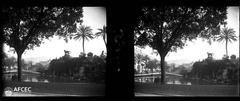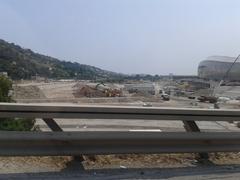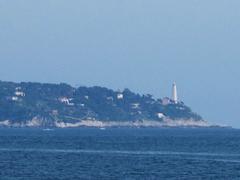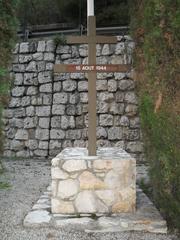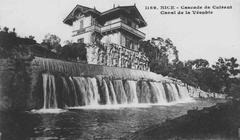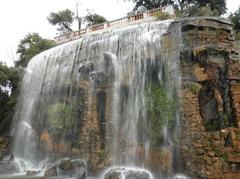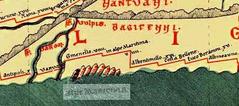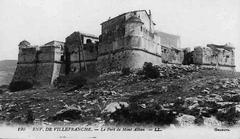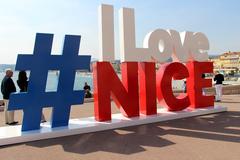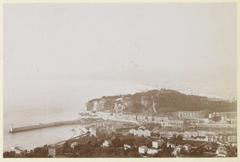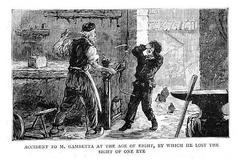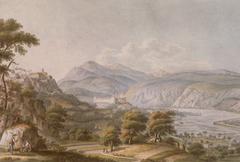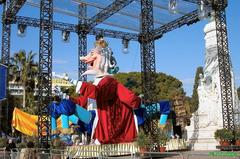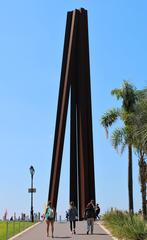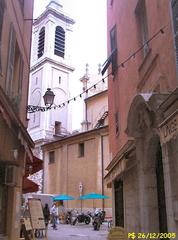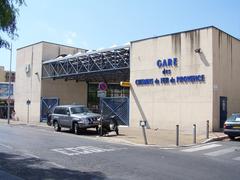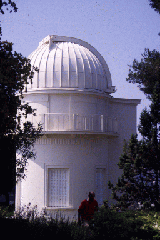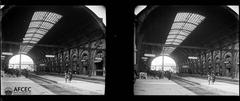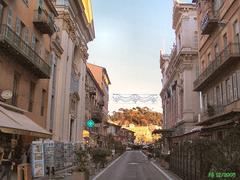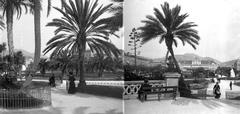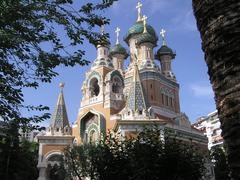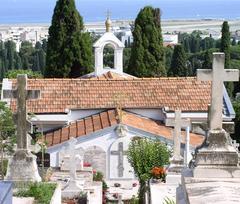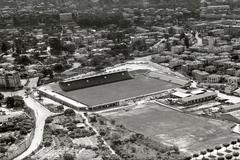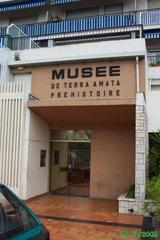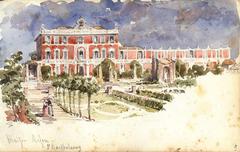Nice Synagogue Visiting Hours, Tickets, and Historical Sites Guide
Date: 04/07/2025
Introduction to the Nice Synagogue and Its Historical Significance
The Grande Synagogue de Nice, more commonly known as the Nice Synagogue, is a historic and architectural gem reflecting the enduring presence and resilience of the Jewish community in Nice, France. Situated in the heart of the city, this synagogue stands as a symbol of faith and cultural heritage on the French Riviera. The Jewish community in Nice dates back to the 13th century, having experienced both periods of prosperity and adversity, including the trials of World War II. The current synagogue, completed in 1886, replaced an earlier 18th-century structure to accommodate a growing congregation and to assert the community’s place within Nice’s civil society (France-Voyage; myCityHunt; Nice-Tourism.com).
The synagogue’s neo-Byzantine architecture, conceived by engineer Paul Martin and architect Brun, features a striking stone façade, a rose window, and the Tablets of the Law crowning its entrance. Inside, its cylindrical-pillared galleries and luminous stained glass windows by Théo Tobiasse and Alain Peinado create an atmosphere of reverence and artistry (myCityHunt).
Today, the synagogue is an active center of worship for one of southern France’s largest Jewish populations, encompassing both Sephardic and Ashkenazi traditions. In addition to religious services, it offers educational programs, cultural activities, and commemorative events, strengthening its role as a hub for Jewish life in the region (Kosher Delight; Colel Chabad). Its central location makes it a convenient stop for visitors exploring Nice’s historic core (JGuide Europe).
This guide provides a comprehensive overview of the Nice Synagogue’s history, architecture, visiting information, and travel tips to help you experience this remarkable site respectfully and meaningfully.
Historical Overview
Early Jewish Presence in Nice
Jewish life in Nice can be traced to the 13th century, with the community growing over the centuries as Nice became a commercial hub on the Mediterranean. By the 18th century, the community was large enough to establish its own synagogue, which became the center of religious and communal activities (France-Voyage).
The 18th-Century Synagogue and Its Replacement
The original 18th-century synagogue soon became inadequate for the expanding Jewish population. This prompted community leaders to plan for a larger, more centralized building that would reflect both the community’s growth and its aspirations within the city.
Construction of the Grande Synagogue
In the late 19th century, the decision was made to construct a new synagogue on rue Gustave-Deloye, replacing a former comic opera house. Paul Martin and architect Brun designed the building in the neo-Byzantine style, and it was inaugurated in 1886 (France-Voyage). Its location and design underscored the Jewish community’s integration into Nice’s civic fabric.
World War II and Aftermath
During World War II, the synagogue was seized and used as an internment site for Jews prior to deportation—a somber chapter that underscores the vulnerability of the community during the Holocaust. The synagogue survived and, after the war, became a focal point for remembrance and revival (France-Voyage).
Restoration and Modern Recognition
A major restoration in the 1980s preserved the synagogue’s historic character, and in 1993, artist Théo Tobiasse and Alain Peinado added a series of stained glass windows depicting biblical narratives. The synagogue was designated a protected historical monument in 2007 (myCityHunt).
Architectural Features
Neo-Byzantine Style
The Nice Synagogue’s architecture is a prime example of neo-Byzantine style, popular among 19th-century synagogues in France and abroad. The pyramid-shaped façade, rose window, and Tablets of the Law are central features. The overall design echoes other prominent synagogues of the era and reflects the aspirations of a modernizing Jewish community (myCityHunt).
Interior Highlights
Inside, the sanctuary features galleries supported by cylindrical pillars and an arrangement that fosters communal worship. The decorative scheme includes intricate moldings, arches, and a palette of colors that enhance the sense of sacredness. The centerpiece is the collection of stained glass windows by Théo Tobiasse, illustrating “The Song of the Prophets” and infusing the space with vibrant light and artistic narrative (myCityHunt).
Role in the Jewish Community
The Nice Synagogue remains the principal place of worship for a Jewish community of over 20,000 people (Kosher Delight). It serves both Ashkenazi and Sephardic congregants and is affiliated with the Consistoire Israélite. The synagogue offers daily and Shabbat services, holiday celebrations, educational programs, and support for social and charitable activities (Colel Chabad).
Visitor Information
Location
- Address: 7 rue Gustave Deloye, 06000 Nice, France
- Phone: +33 4 93 92 11 38
Visiting Hours and Tickets
- Visiting Hours: Generally open Monday to Friday, 10:00 AM to 5:00 PM. Hours may vary on Jewish holidays or special events. It is essential to verify the schedule in advance (JGuide Europe).
- Admission: Entry is usually free, but donations are appreciated.
- Guided Tours: Available by prior arrangement, occasionally offered during European Heritage Days (Paul Marina). Group tours may require a nominal fee.
Accessibility
The synagogue is wheelchair accessible, and staff are available to assist. The site is centrally located and easily reachable by public transport.
Etiquette and Security
- Dress Code: Modest clothing is required. Men must wear a kippah (provided on site), and women should dress conservatively.
- Photography: Generally restricted, especially during services. Always seek permission.
- Behavior: Maintain silence and respect, especially during prayer times. Mobile phones should be silenced.
- Security Measures: Expect bag checks and ID verification at the entrance.
Travel Tips and Nearby Attractions
- Visit during weekday mornings or early afternoons for a quieter experience.
- Combine your visit with other Nice attractions: Old Town (Vieux Nice), Promenade des Anglais, Russian Orthodox Cathedral, and local kosher restaurants.
- Download the Audiala app for audio guides and further information on Jewish heritage sites in Nice.
Frequently Asked Questions (FAQ)
Q: What are the Nice Synagogue’s visiting hours?
A: Typically Monday to Friday, 10:00 AM to 5:00 PM, but confirm in advance as hours may change.
Q: Is there an admission fee or are tickets required?
A: Individual entry is free; donations are welcome. Group tours may have a small fee.
Q: Are guided tours available?
A: Yes, by prior arrangement or during special events.
Q: Is the synagogue accessible for people with disabilities?
A: Yes, the building is wheelchair accessible.
Q: Can I take photographs inside?
A: Usually not allowed during services; always seek permission first.
Summary and Call to Action
The Nice Synagogue is a unique blend of history, architecture, and living tradition, offering visitors a meaningful experience at the crossroads of culture and faith. To ensure a rewarding visit, plan ahead, respect local customs, and consider joining a guided tour to appreciate the synagogue’s historical and artistic legacy. For up-to-date visitor information, consult the official synagogue website or trusted tourism resources.
Enhance your visit by exploring nearby sites and using resources like the Audiala app for deeper engagement with Nice’s Jewish heritage.
Sources
- France-Voyage
- myCityHunt
- Kosher Delight
- Colel Chabad
- Paul Marina
- Nice-Tourism.com
- JGuide Europe
- Alloj.com
- Totally Jewish Travel
For images, maps, and multimedia resources, refer to official or reputable sites. Alt text suggestions: “Nice Synagogue exterior view,” “Interior stained glass windows of Nice Synagogue,” “Map showing location of Nice Synagogue in Nice.”
